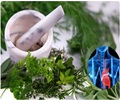Usually, cholesterol levels are assessed in the fasting state but a new method of assessment can be done in the non-fasting state.

‘The new LDL calculation method with the Friedewald method, developed in the late 1970s show that the new method can be used to cholesterol levels without fasting.’





"Although the new LDL calculation method is a bit more complex, the beauty is that it can be performed using information that is already collected in the blood sample for the standard lipid profile and automated in the lab's computer system to give a more accurate result," according to Martin, co-director of the Advanced Lipid Disorders Center and assistant professor of medicine at the Johns Hopkins University School of Medicine. "Since nonfasting samples are now accurate, it's more convenient for patients because they can come in anytime and don't need to return for a second appointment if they have eaten."
For the study, the researchers compared the accuracy of the new LDL calculation method with the Friedewald method, developed in the late 1970s when patients fasted or did not fast.
Friedewald method
The Friedewald method was shown by Martin and colleagues in 2013 to underestimate LDL cholesterol levels, particularly in people with high triglycerides. Triglycerides are fatty acids that tend to be higher in people with obesity and diabetes and that increase after eating. The Friedewald method was developed based on fasting blood samples, and that has remained a requirement for the calculation.
Advertisement
Comparing Cholesterol Assessment Methods
The physicians did their comparison using data already gathered in a clinical repository led by blood lipid specialists at Johns Hopkins University. Specifically, they drew on information about 1,545,634 U.S. participants in The Very Large Database of Lipids ¾ created and maintained by Johns Hopkins ¾, 959,153 of whom fasted 10 to 12 hours before a cholesterol test blood draw, and 586,481 of whom did not.
Each person had a blood draw and the laboratory used ultracentrifugation to directly measure total cholesterol, HDL, LDL and other cholesterol components. The same laboratory measured triglycerides using a standardized assay. Overall, about half of the participants were women; participants average age was 55. The participants were referred by their health care providers to have their lipids/cholesterol tested.
The team focused on LDL levels in people with less than 70 milligrams per deciliter, because under professional guidelines, those with LDL levels over that number are considered at elevated risk for cardiovascular events, and in need of lifestyle changes and drug treatment.
The investigators then compared fasting and nonfasting results using the Friedewald and new calculation methods to the actual measured value of LDL cholesterol for accuracy. For traditional lab testing for patients, cholesterol is estimated rather than measured because direct measurement using ultracentrifugation isn't time- or cost-effective--although ultracentrifugation provides the most accurate measurement. Other direct measurement methods are available, but their accuracy and variability isn't predictable.
For the final analysis of 127,741 participants with LDL less than 70 milligrams per deciliter, the nonfasting accuracy was 92 percent using the new method compared to 71 percent using the Friedewald method when both were compared to the actual measured value of LDL.
Approximately 30 percent of the nonfasting participants had greater than 10 milligrams per deciliter inaccurate cholesterol measurements using the Friedewald method compared with only 3 percent error from the actual measured value with the new method.
The investigators report that the overall accuracy of LDL calculations decreased as levels of triglycerides increased, particularly when using the Friedewald method. For example, in 6,168 nonfasting participants with high triglycerides between 200 to 399 milligrams per deciliter, the accuracy of the calculation among those in the less than 70 LDL range was 82 percent with the new method versus 37 percent using the Friedewald method.
No matter which method was used, fasting was always shown to be more accurate than nonfasting when analyzing LDL cholesterol levels, but the researchers say the differences with the newer method likely weren't clinically meaningful in the vast majority of cases.
Although the new method of calculating cholesterol doesn't suffer from too much error from not fasting, the researchers say that fasting may still be important for certain patients: those with high-risk of cardiovascular disease whose treatment might change based on a small inaccuracy in the LDL cholesterol calculation, those with a triglyceride disorder or those who need to fast for other types of tests such as blood sugar.
"Some patients can have sizable changes in triglycerides after eating, and that is what makes the older Friedewald method less accurate for these people because this isn't taken into account and it exaggerates the underestimation problem of LDL levels," says Vasanth Sathiyakumar, M.D., a senior resident at Johns Hopkins.
"One of the strengths of our analysis is that we don't look at average responses but rather look at each participant's personalized levels using 180 different factors to determine a more accurate calculation."
Because the study looked at data from a clinical laboratory database, the physicians couldn't take into account detailed clinical characteristics such as whether patients were on cholesterol-lowering statins and how that affected the fasting/nonfasting results.
"Because of our study, clinicians and patients can make better decisions because they are armed with more precise test results when using our cholesterol calculation method without fasting," says Martin.
"Clinicians who are still using the Friedewald method must exercise more caution in interpreting the results, but in the meantime they can use our smartphone app (iTunes and Google Play) until their lab converts over."
Source-Eurekalert














